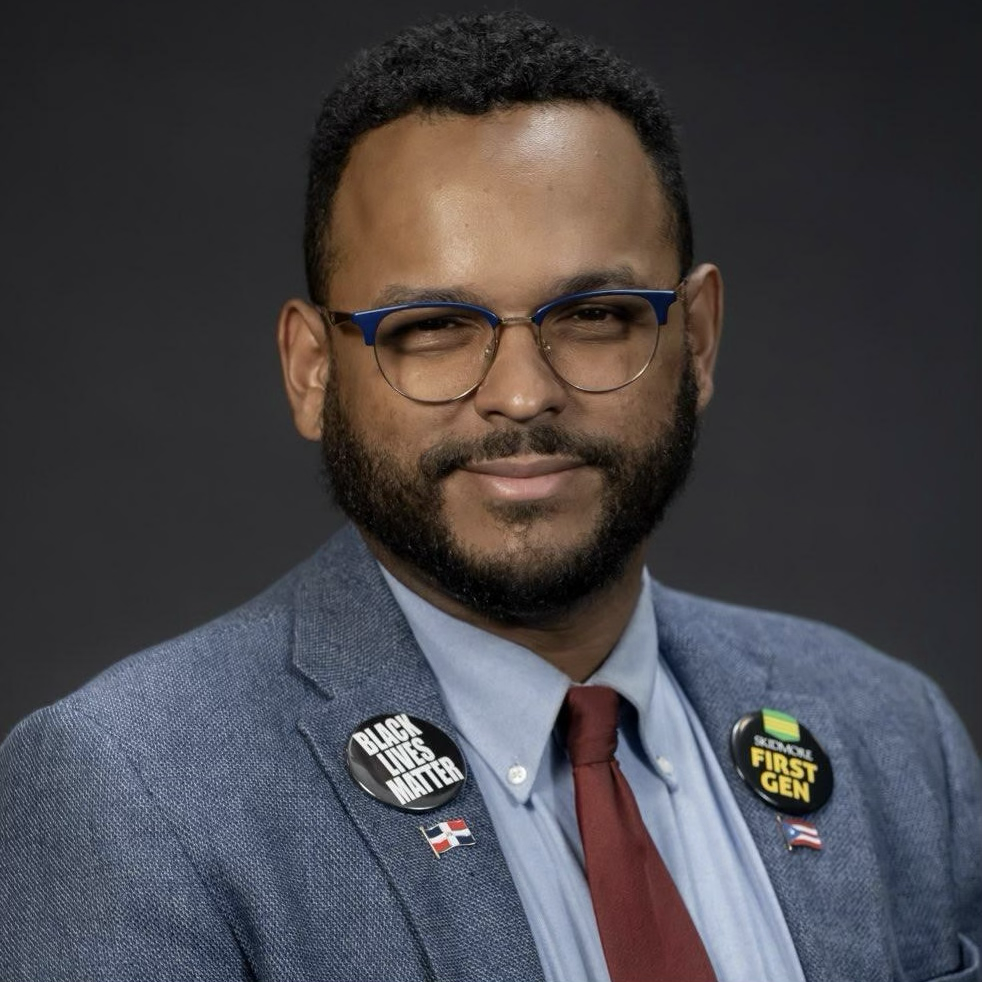How to Navigate the Changing Landscape of College Financing
“Families need to understand that choosing a college isn’t just about affordability—it’s about value. By weighing the costs against post-graduation outcomes, they can make decisions that lead to long-term financial stability.”
Danny Tejada, Lead College Counselor at We Go To College
The financial landscape of higher education in the United States is shifting dramatically. Over the last decade, federal loans for undergraduate students have decreased significantly, while institutional grant aid and Pell Grants have risen to historic levels.
According to the College Board’s Trends in College Pricing and Student Aid 2024, federal student loan borrowing has declined by 47 percent since the 2013–14 academic year, while institutional grants increased by 30 percent. Concurrently, updates to the Free Application for Federal Student Aid (FAFSA) have expanded access to federal and state aid, enabling more students to qualify for the maximum Pell Grant amount.
These changes reshape how families approach financing, how colleges attract students, and how policymakers design support structures. To explore these shifts and provide actionable insights, we spoke with Danny Tejada, the lead college counselor at We Go To College, LLC, whose expertise highlights strategies to navigate this evolving terrain.
Meet the Expert: Danny Tejada, Lead College Counselor at We Go To College, LLC

Danny Tejada grew up in public housing in East New York, Brooklyn. He is a first-generation high school and college graduate. He attended Skidmore College. He also holds a certificate in College Advising from Teachers College, Columbia University. He co-authored a book with his mentee called Different Families, Still Brothers.
Tejada has been in college counseling for over ten years, working in public, private, charter schools, non-profits, and his own consulting company, We Go To College, LLC. In his consulting, he works with nonprofits and high schools on their college counseling programming, colleges recruiting historically disadvantaged students, and individual families on the college application process. In addition to his consulting work, he works at an independent school in Manhattan and reads applications for the University of California, San Diego.
Tejada sits on the boards of Stony Brook University’s Counselor Advisory, Uprooted Academy, and Puerto Rican Family Institute, Inc. Previously, he was on Common App’s Counselor Advisory Committee and College Access Consortium of New York’s board. Throughout his college counseling career, he has presented at state and national conferences and been featured on NewsNation, in The New York Times, NPR, Forbes, The Chronicle of Higher Education, Education Week, and Money.com, discussing college access issues for historically disadvantaged students.
Tejada’s mission is to expand college access for low-income, Black, and Brown students so they can achieve upward mobility and break their generational curse.
Shifting Trends in College Financing
The balance of power in college financing is shifting, with students and families gaining more control over their options. Expanded federal and state aid programs, combined with increased institutional scholarships, are creating pathways to affordability that were previously out of reach for many. According to the College Board, total federal grant aid increased by 6 percent between 2021–22 and 2022–23, reaching $33.2 billion. Pell Grants, which account for nearly a large amount of federal grant aid, now reach more families thanks to recent FAFSA updates and expanded state-level programs.
This shift is particularly significant for middle-income families, who have historically been caught between insufficient financial aid and the inability to pay out-of-pocket costs. These expanded resources are helping bridge that gap.
Colleges, meanwhile, are responding to competitive pressures by enhancing institutional aid. Over the past decade, institutional grants for undergraduates have grown by 30 percent as schools increasingly rely on tuition discounts to attract students amid declining enrollment projections. “Colleges are facing a demographic shift that’s forcing them to rethink how they attract students,” says Tejada. “Tuition discounts, specialized scholarships, and partnerships with local communities are becoming essential strategies.”
These trends represent more than just financial shifts—they reflect a broader movement toward flexibility and equity in college financing, offering families greater agency to make choices that align with their needs and goals.
The Value of a College Degree in a Changing Landscape
With financial aid options expanding, families are increasingly focused on the return on investment (ROI) of a college degree. Tools like the U.S. Department of Education’s College Scorecard offer insights into post-graduation earnings, loan repayment rates, and median debt levels, empowering families to evaluate the long-term value of their choices. For example, public college graduates often carry lower debt burdens and experience higher repayment rates compared to those from private for-profit institutions.
“Families now have access to more data than ever to determine which college offers the best value,” notes Tejada. This access has shifted priorities, particularly for middle-income families, who are turning down expensive, prestigious institutions in favor of schools that offer robust financial aid packages and lower out-of-pocket costs.
However, broader challenges remain. Public skepticism about the value of a degree is growing. A 2023 Pew Research Center study found that only 47 percent of Americans believe college is worth the cost, down compared to opinion a decade ago—but only without taking out loans. This decline in confidence has been exacerbated by shifting enrollment patterns during the pandemic, as families weigh the financial burden of a degree against its potential long-term benefits.
To address these concerns, many colleges are adapting their strategies to reassure families and demonstrate the value of higher education. Institutions are implementing tuition freezes, expanding income-based repayment options, and promoting high-ROI programs such as STEM and healthcare degrees that align with workforce demands. These initiatives aim to make college more appealing by showcasing clear economic outcomes for graduates.
Yet, as these efforts continue, systemic gaps remain: “Expanding aid isn’t just about increasing numbers—it’s about ensuring the right students receive the right support,” Tejada emphasizes. He notes that despite progress, the system still falls short for first-generation and low-income students who face unique barriers to accessing and completing college. Bridging these gaps requires targeted interventions and policies that prioritize equity alongside affordability.
Strategies for Navigating the Evolving Financing Landscape
Navigating this new landscape requires proactive strategies from students, families, educators, and policymakers. While the expanded resources are promising, making the most of them demands careful planning.
For Students and Families
Families should begin their college search with tools like the College Scorecard, Net Price Calculators, and institutional financial aid comparison resources. These tools allow families to assess not just the sticker price of a college but the actual out-of-pocket costs after grants and scholarships are applied. It’s equally critical to research a school’s graduation rates, job placement statistics, and average starting salaries for graduates, as these metrics provide a clearer picture of the potential return on investment (ROI).
“Families need to understand that choosing a college isn’t just about affordability—it’s about value,” explains Tejada. “By weighing the costs against post-graduation outcomes, they can make decisions that lead to long-term financial stability.”
Additionally, students should explore external scholarship opportunities but remain vigilant about how these awards interact with institutional aid. Many colleges have scholarship displacement policies, which reduce institutional grants when a student receives external funding. Tejada advises families to ask admissions and financial aid offices directly about their policies to avoid surprises later.
“Scholarship displacement is one of the most overlooked barriers for students,” Tejada emphasizes. “Families need to ask tough questions when comparing aid packages, and policymakers must push for more transparency.”
For Educators and Counselors
Educators play an essential role in helping students navigate the complexities of college financing. In addition to providing accurate information on FAFSA updates and state aid programs, counselors should actively guide students in understanding the long-term implications of their financial choices.
Workshops on financial literacy can be particularly effective in empowering students and families. These workshops can cover topics such as how to interpret financial aid offers, compare net costs between schools, and avoid excessive borrowing. “Counselors are uniquely positioned to bridge the knowledge gap for families,” says Tejada. “By teaching financial literacy and explaining aid offers, we can empower students to make decisions that align with their goals.”
Counselors should also advocate for students who face unique challenges, such as first-generation college applicants or those from low-income backgrounds. Helping these students access resources like fee waivers, need-based grants, and targeted scholarships can significantly impact their ability to attend and succeed in college.
For Policymakers
At the state and federal levels, policymakers must take a proactive approach to address structural inequities in the financing system. Expanding Pell Grants and state-level aid are critical steps, but more targeted efforts are needed to ensure aid reaches the students who need it most.
Transparency is also essential. Policymakers should require colleges to clearly disclose their financial aid policies, including how they handle scholarship displacement and how institutional aid is awarded. This level of clarity helps families make informed decisions and reduces the potential for financial surprises during a student’s college journey.
“Collaboration between policymakers, educators, and institutions is essential to creating an equitable financing system,” Tejada explains. “When all stakeholders work together, we can ensure students receive the support they need to succeed.”
Beyond financial aid reforms, policymakers should focus on systemic changes that make higher education more accessible. Expanding pathways to college through dual-enrollment programs, community college partnerships, and apprenticeships can offer students cost-effective alternatives while still providing valuable credentials.
By leveraging these strategies, students and families can take full advantage of the evolving financial aid landscape. With the right tools and support, they can confidently pursue higher education while minimizing financial risks and maximizing the benefits of their investment.
Conclusion
The changing landscape of college financing offers both challenges and opportunities. With expanded grant programs, enhanced institutional aid, and more transparency, families are gaining the tools to navigate the system effectively. However, continued efforts from policymakers, educators, and institutions are needed to address persistent inequities and skepticism about the value of higher education.
As Tejada puts it, “This is a pivotal moment to redefine access and equity in higher education.” By embracing the resources and strategies available, families can not only reduce their financial burden but also choose paths that offer lasting value and opportunities for success.
